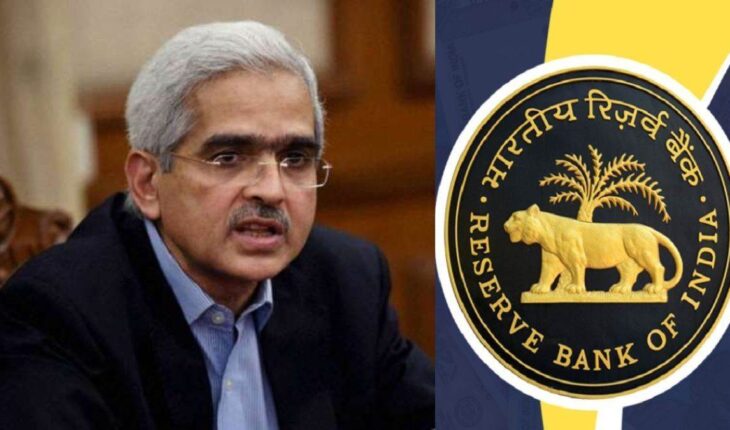The Monetary Policy Committee meeting lasted from 7 to 9 October 2024, the decision of which was announced on 10 October, in which the policy rates were kept unchanged as expected. However, after the US Federal Reserve cut interest rates by 0.50 percent on September 18, there was pressure on the central banks of all the countries of the world including India to cut the policy rates.
The economic situation of India is different and there is pressure on the Reserve Bank of India to accelerate the pace of development by creating a balance between development and inflation. Before keeping the policy rates unchanged, the Reserve Bank held in-depth discussions on the current economic situation, GDP growth rate, inflation situation, pace of economic activities etc. and decided to keep the repo rate unchanged, it means at 6.5 percent.
The last meeting of the Monetary Policy Committee was held in August 2024. The Reserve Bank of India last increased the repo rate by 0.25 basis points in February 2023, taking the repo rate to 6.50. The Reserve Bank cut the repo rate by 0.40 percent during 27 March 2020 to 9 October 2020. After this, the Monetary Policy Committee increased the repo rate 5 times in its 10 meetings, while keeping the repo rate unchanged 4 times and once in August 2022, the repo rate was reduced by 0.50 basis points. Before the Corona pandemic, the repo rate was at 5.15 percent on 6 February 2020.
The Federal Reserve of US is considered to be the leader of central banks around the world, the biggest reason for which is that the US dollar is one of the strongest currencies in the world and US is the strongest country in the world from a strategic and economic point of view. Generally, central banks around the world follow the footsteps of the Federal Reserve. However, due to the economic conditions of all countries being different, sometimes the central banks of some countries take decisions other than the Federal Reserve. Barring a few exceptions, India has also been taking steps in line with the decisions taken by the Federal Reserve.
For the first time in the last 4 years, the Federal Reserve has cut the policy rates by 50 basis points on September 18, after which the possibility of central banks of other countries of the world also cutting policy rates has increased. However, it is also being the growing apprehensions of the Federal Reserve about a possible economic recession in US because the pace of development in US is slow right now, and it is necessary to do so to accelerate it. Reducing interest rates will increase borrowing and accelerate economic activities.
Like US, in China too, the growth rate of parameters like production, consumption etc. is slower than expected. In August, the unemployment rate reached a 6-month high of 5.3 percent and the urban unemployment rate reached 17.1 percent in July, which was 13 percent in June. To accelerate the growth rate, China’s central bank, the People’s Bank of China, has cut lending rates, so that the pace of development can be accelerated. China is also facing the problem of good governance, due to which foreign investors are refraining from investing there and some investors are turning to India.
Gross Domestic Product (GDP) figures are continuously improving in India. Global rating agency Moody’s has increased India’s GDP growth forecast for the calendar year 2024 to 7.1 percent, which was earlier 6.8 percent and 6.1 percent. However, Moody’s has kept India’s GDP growth forecast for 2025 unchanged at 6.5 percent, while the GDP growth forecast for 2026 has been expressed as 6.6 percent. Even though Moody’s has projected lower GDP growth rates for calendar years 2025 and 2026 compared to calendar year 2024, these figures are better than many developed countries of the world.
Retail inflation remained below 4 percent in July and August and the price of food items is expected to come down after the rains end, due to which retail inflation is expected to come down further in the coming months. Moody’s has projected inflation in India at 4.5 percent and 4.1 percent in 2025 and 2026. According to the Reserve Bank of India, inflation may come down to 4.5 percent in the financial year 2025.
HSBC manufacturing PMI fell to 56.7 in September 2024 from 57.5 in August. Service PMI also fell to 58.9 percent in September from 60.9 in August. Of course, the manufacturing and service PMI has registered a partial decline in September as compared to August. Still, it is above 50, which shows that the manufacturing and service sectors are in a bullish trend.
The repo rate has been maintained at 6.5 per cent since February 2023. Nevertheless, borrowings remain robust. Credit offtake grew by 5.8 per cent as compared to December 2023 and grew by 0.4 per cent sequentially for the fortnight ended August 9, 2024. In absolute terms, in the last 8 months, credit offtake grew by Rs 9.2 lakh crore to Rs.168.8 lakh crore as of August 9, 2024, which can be considered an encouraging sign.
At present, GDP is growing, and retail inflation is also under control. Also, retail inflation is expected to remain within the tolerance limits set by the Reserve Bank of India in FY 2025 and FY 2026. Economic activity is picking up due to the weak dollar and a pick-up in investment and credit offtake. Nevertheless, the central bank is keeping a close eye on inflation as it is the biggest obstacle in the path of development, and it is also the cause of many kinds of adverse effects. Therefore, this time also the Reserve Bank of India, unlike the Federal Reserve, has kept the repo rate unchanged at 6.5 percent.
Satish Singh, Ahmedabad Based Senior Columnist, views are personal.






